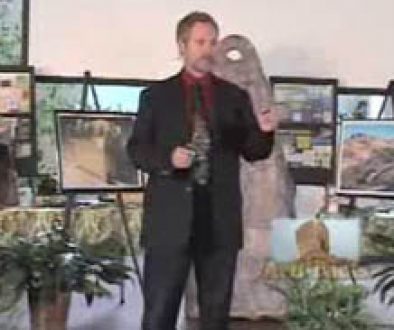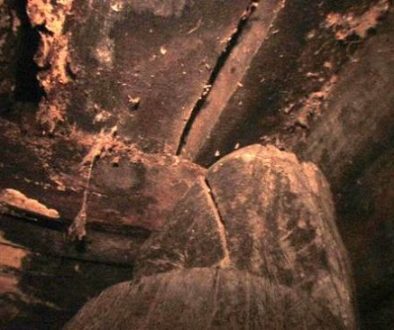‘Missing Pyramid’ Found by Egyptian Archaeologists
SAQQARA, Egypt — Egypt unveiled on Thursday a newly uncovered 4,000-year-old “missing pyramid” and a ceremonial procession road where high priests, their faces obscured by masks, once carried mummified sacred bulls worshipped in the ancient Egyptian capital of Memphis.
The pyramid was actually a “rediscovery,” said Egypt’s antiquities chief, Zahi Hawass.
It is believed to have been built by King Menkauhor, an obscure pharaoh who ruled for only eight years.
In 1842, German archaeologist Karl Richard Lepsius mentioned it among his finds at Saqqara, giving it number 29 and calling it the “Headless Pyramid” because its top was missing.
But the desert sands covered Lepsius’ discovery, and no archaeologist since was able to find Menkauhor’s resting place.
“We have filled the gap of the missing pyramid,” Hawass told reporters on a tour of the discoveries at Saqqara, the necropolis and burial site of the rulers of ancient Memphis, the capital of Egypt’s Old Kingdom, about 12 miles south of Cairo.
Only the pyramid’s base — or the superstructure as archeologists call it — was found after a 25-foot-high mound of sand was removed over the past year and a half by Hawass’ team.
Hawass said the “typical style of the pyramid” indicates it was from the Fifth Dynasty, a period that began in 2465 B.C. and ended in 2325 B.C., spanning approximately 140 years during the Old Kingdom.
That would put it about two centuries after the completion of the Great Pyramid of Giza, believed to have been finished in 2500 B.C.
Another proof of its date, Hawass says, was the discovery inside the pyramid of a gray granite lid of a sarcophagus, of the type used at that time.
The rectangular base, at the bottom of a 15 foot-deep pit dug out by workers, gives little indication of how imposing the pyramid may have once been.
Heaps of huge rocks, many still partially covered in sand and dust, mark the pyramid’s walls and entrance, and a burial chamber was discovered inside.
Archaeologists have also not found a cartouche — a pharaoh’s name in hieroglyphs — of the pyramid’s owner. But Hawass said that, based on the estimated dating of the pyramid, he was convinced it belonged to Menkauhor.
Egyptian workers in long galabeyah robes and headshawls were dusting off stones of the pyramid’s base. Hawass said he expected to unearth “subsidiary” pyramids around Menkauhor’s main one, and hoped to find inscriptions there to back his claim.
The second discovery Hawass announced Thursday was a part of a ceremonial procession road, dating back to the Ptolemaic period, when ethnic Greeks ruled Egypt for about 300 years until the Romans took over in 30 B.C. after Cleopatra’s suicide.
It runs alongside Menkauhor’s pyramid, leading from a mummification chamber toward the Saqqara Serapium, a network of underground tombs where sacred bulls were interred, discovered by French archaeologist August Mariette in 1850.
A high priest, his face covered with a mask, would carry the mummified bulls’ remains down the procession road — the only human allegedly allowed to walk on it — to the chambers where the bulls would be placed in sarcophagi in the Serapium, about a third of a mile away, Hawass said.
Ancient Egyptians considered certain bulls to be earthly incarnations of Apis, the city god of Memphis who was connected with fertility and the sun-cult.
A bull would be chosen for its deep black coloring and would be required to have a single white mark between the horns.
Selected by priests and honored until death, it was then later mummified and buried in the underground galleries of the Serapium.
The procession route’s discovery “adds an important part to our knowledge of the Old Kingdom and its rituals,” Hawass said.
The sprawling archaeological site at Saqqara is most famous for the Step Pyramid of King Djoser — the oldest of Egypt’s over 100 pyramids, built in the 27th century B.C.
Much of Saqqara was plundered throughout antiquity, but it is still riddled with underground tombs, galleries and robber shafts.
And although archaeologists have been exploring Egypt for some 200 years, Hawass says only a third of what lies underground in Saqqara has been discovered.
“Saqqara is Egypt’s virgin site,” Hawass said. “You never know what secrets the sands of Egypt hide. I always believe there will be more pyramids to discover.”
This story originally appeared here at FoxNews.com






